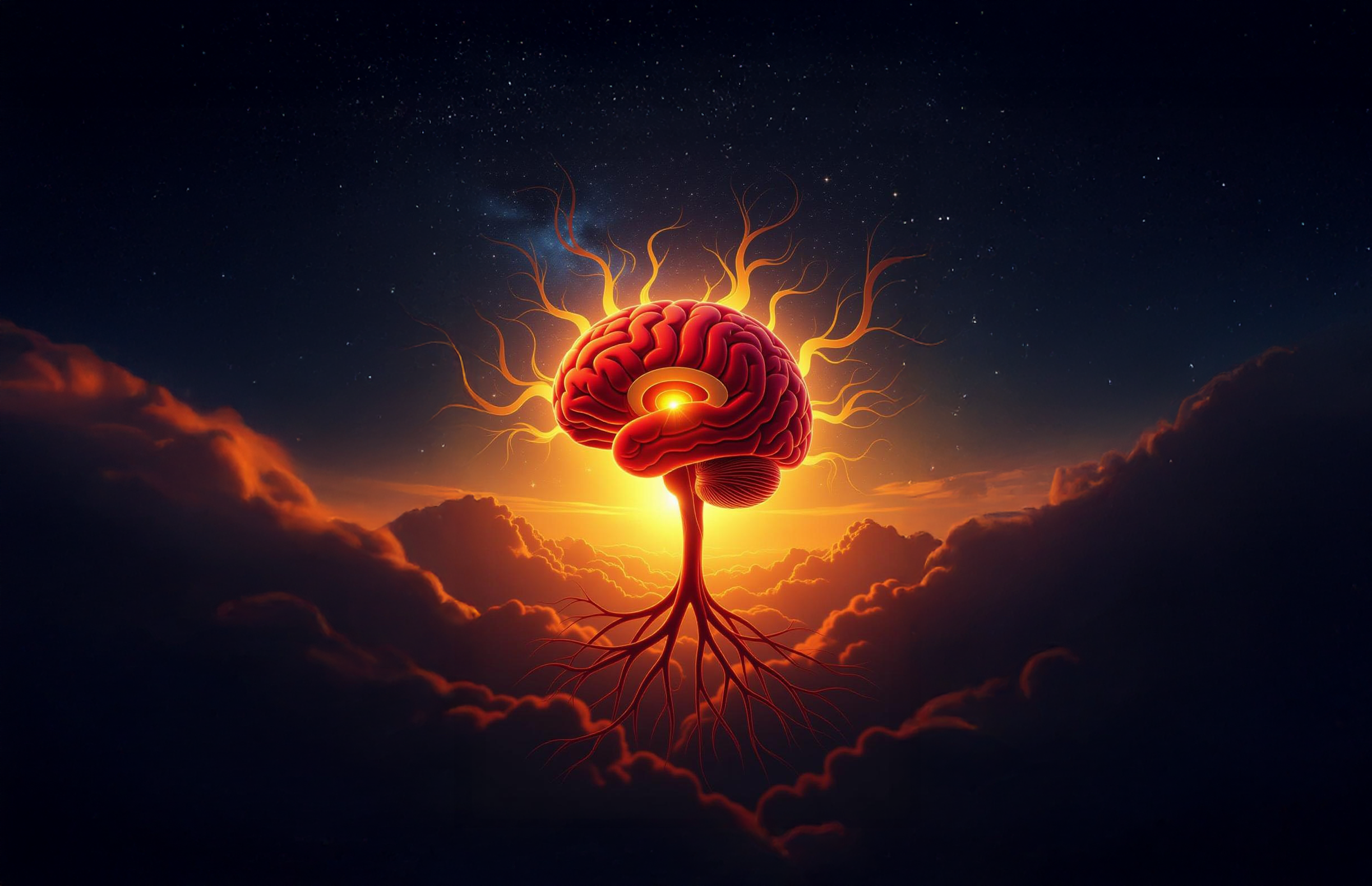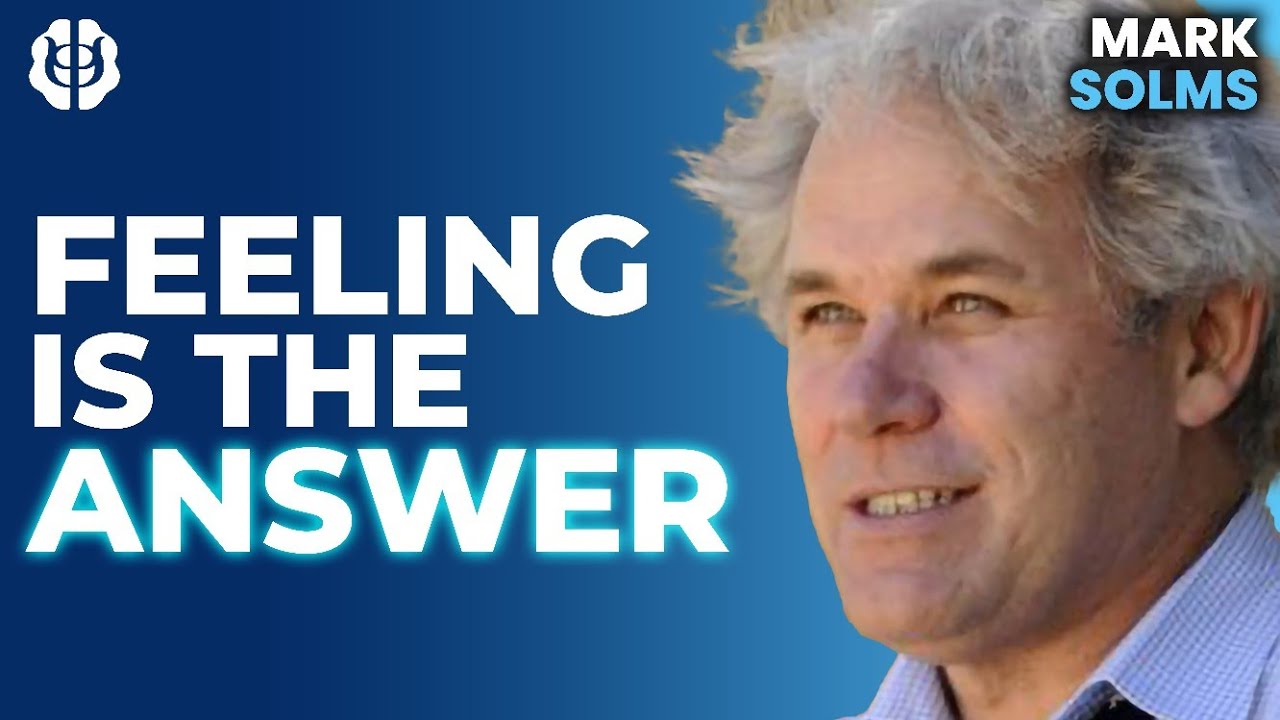The Cortical Fallacy: Why the Brainstem Holds the Key to Consciousness

Welcome to this companion blog post for our latest podcast episode, "Mark Solms: Where Is The Source Of Consciousness? The Hidden Spring & The Cortical Fallacy." In this episode, we delve into the fascinating and often controversial work of Professor Mark Solms, who challenges the long-held belief that the cerebral cortex is the primary source of consciousness. This post will expand on the key themes discussed in the episode, offering a deeper exploration of the brainstem's crucial role in generating our subjective experience. Join us as we unravel the "cortical fallacy" and explore alternative perspectives on the neural basis of consciousness.
The Conventional View: The Cortex as the Seat of Consciousness
For decades, the dominant view in neuroscience has placed the cerebral cortex at the center of consciousness. The cortex, with its intricate folds and vast network of neurons, is responsible for higher-level cognitive functions like language, reasoning, and perception. It seemed logical to assume that this complex structure was also the engine of our conscious awareness.
This cortical-centric perspective gained traction for several reasons. Firstly, damage to specific areas of the cortex often results in specific cognitive deficits. For example, damage to the visual cortex can lead to blindness, while damage to Broca's area can impair speech production. These correlations between cortical lesions and cognitive impairments strongly suggested a causal link between the cortex and various aspects of conscious experience.
Secondly, advancements in neuroimaging techniques like fMRI and EEG have allowed researchers to observe brain activity in real-time. These studies have consistently shown that cortical areas are highly active during conscious tasks, such as attending to stimuli, making decisions, and recalling memories. The correlation between cortical activity and conscious experience further solidified the belief that the cortex is the key player in consciousness.
However, despite the compelling evidence linking the cortex to cognitive functions and conscious experience, some researchers have begun to question the assumption that the cortex is solely responsible for generating consciousness. They argue that the conventional view overlooks the crucial role of subcortical structures, particularly the brainstem, in creating the fundamental feeling of being conscious.
Mark Solms' Research: A Focus on the Brainstem
Professor Mark Solms is a leading figure in the movement to challenge the cortical fallacy. His research, rooted in both neuropsychology and psychoanalysis, has focused on the role of the brainstem in generating conscious experience. Solms' work draws on a wealth of evidence from patients with brain lesions, particularly those affecting the brainstem. These patients often exhibit profound alterations in their level of consciousness, even when their cortex remains relatively intact.
Solms' interest in the brainstem began during his work with patients who had suffered strokes or other injuries to this area of the brain. He observed that damage to the brainstem often resulted in a loss of consciousness, even when the cortex was largely spared. This observation led him to hypothesize that the brainstem plays a critical role in generating the basic feeling of being conscious, a feeling that precedes and underlies all other conscious experiences.
To support his hypothesis, Solms draws on a wide range of evidence, including studies of patients with akinetic mutism, a condition characterized by a profound lack of motivation and spontaneity. Patients with akinetic mutism are often awake and alert, but they show little or no interest in interacting with their environment. Solms argues that this condition is caused by damage to the brainstem's ascending arousal system, which is responsible for regulating the level of arousal and motivation.
Solms also points to the importance of the brainstem in generating emotions. He argues that emotions are not simply cognitive appraisals, but rather fundamental feelings that arise from the brainstem's interaction with the body. These feelings, Solms believes, are the building blocks of conscious experience. Without them, there would be no subjective experience, no sense of what it is like to be.
Why the Brainstem Matters: Affect and Feelings (Solms' Theory)
Solms' theory emphasizes the crucial role of affect and feelings in consciousness. He argues that the brainstem is the primary generator of these affective states, which provide the foundation for all other conscious experiences. Affect, in Solms' view, is not simply a byproduct of cognitive processing, but rather a fundamental aspect of being conscious.
Solms identifies several key brainstem structures that are involved in generating affect, including the periaqueductal gray (PAG), the parabrachial nucleus, and the locus coeruleus. These structures are responsible for regulating a wide range of physiological and behavioral responses, including heart rate, breathing, muscle tone, and attention. They also play a crucial role in generating emotions like fear, anger, sadness, and joy.
According to Solms, these basic affective states are the raw ingredients of conscious experience. They provide the "feeling tone" that colors our perceptions, thoughts, and memories. Without these feelings, our conscious experience would be flat and empty. We would be like automatons, capable of processing information but lacking any subjective awareness.
Solms' theory also highlights the importance of the brainstem's connections to the cortex. He argues that the brainstem acts as a "global workspace," broadcasting affective signals to the cortex, where they are integrated with sensory information and cognitive processes. This interaction between the brainstem and the cortex is what gives rise to our rich and varied conscious experience.
Consciousness vs. Intelligence: A Key Distinction
One of the key distinctions that Solms makes is between consciousness and intelligence. He argues that these two concepts are often conflated, leading to a misunderstanding of the neural basis of consciousness. Intelligence, in Solms' view, is the ability to solve problems, learn new skills, and adapt to changing environments. Consciousness, on the other hand, is the subjective experience of being aware.
Solms points out that it is possible to have intelligence without consciousness, and vice versa. For example, many animals exhibit sophisticated problem-solving abilities without necessarily possessing the same level of conscious awareness as humans. Similarly, patients with certain types of brain damage may retain their intelligence while losing their capacity for conscious experience.
This distinction between consciousness and intelligence is crucial for understanding Solms' critique of the cortical fallacy. He argues that the cortex is primarily responsible for intelligence, while the brainstem is primarily responsible for consciousness. By focusing solely on the cortex, researchers have overlooked the crucial role of the brainstem in generating the fundamental feeling of being aware.
Evidence for Non-Cortical Consciousness
Beyond Solms' research, there is mounting evidence from other sources that supports the idea of non-cortical consciousness. For example, studies of patients with hydranencephaly, a condition in which the cerebral cortex is largely absent, have shown that these patients can still exhibit signs of consciousness, such as responding to stimuli and showing signs of emotion. These findings challenge the assumption that the cortex is necessary for consciousness.
Another line of evidence comes from studies of anesthesia. General anesthetics are known to suppress cortical activity, but they also affect the brainstem. Some researchers argue that the loss of consciousness during anesthesia is due to the suppression of brainstem activity, rather than cortical activity. This suggests that the brainstem plays a critical role in maintaining consciousness.
Furthermore, research on near-death experiences (NDEs) has revealed that some individuals report having vivid and complex experiences while their cortex is presumably inactive. These experiences often involve a sense of detachment from the body, encounters with deceased loved ones, and a feeling of profound peace. While the mechanisms underlying NDEs are not fully understood, they suggest that consciousness may be able to exist independently of the cortex.
Level vs. Contents of Consciousness: A Dichotomy
Another important distinction that helps clarify the debate about the neural basis of consciousness is the dichotomy between the level and the contents of consciousness. The level of consciousness refers to the overall degree of wakefulness and alertness, while the contents of consciousness refer to the specific thoughts, feelings, and perceptions that are present in awareness.
Solms argues that the brainstem is primarily responsible for regulating the level of consciousness, while the cortex is primarily responsible for the contents of consciousness. Damage to the brainstem can result in a loss of consciousness, even if the cortex is still functioning. Conversely, damage to the cortex can result in a loss of specific cognitive functions, but it does not necessarily lead to a loss of consciousness.
This distinction helps to explain why some patients with cortical damage can still exhibit signs of consciousness. Even if their cortex is unable to process sensory information or generate complex thoughts, their brainstem may still be able to maintain a basic level of wakefulness and awareness.
Exploring Other Theories of Consciousness (Panpsychism, Idealism, etc.)
The debate about the neural basis of consciousness has also led to the exploration of alternative theories of consciousness, such as panpsychism and idealism. Panpsychism is the view that consciousness is a fundamental property of all matter, while idealism is the view that reality is fundamentally mental. These theories offer radically different perspectives on the nature of consciousness and its relationship to the physical world.
Solms, while not explicitly endorsing panpsychism or idealism, acknowledges that these theories raise important questions about the nature of consciousness. He argues that the traditional materialistic view, which holds that consciousness is simply a product of brain activity, may be too narrow to account for the full range of conscious phenomena.
Panpsychism suggests that even seemingly inanimate objects may possess a rudimentary form of consciousness. This idea challenges the assumption that consciousness is limited to complex organisms with brains. It also raises the possibility that consciousness is more widespread than we currently realize.
Idealism, on the other hand, proposes that reality is fundamentally mental, and that the physical world is simply a manifestation of consciousness. This view challenges the assumption that the physical world is independent of our minds. It suggests that consciousness is not just a product of the brain, but rather the very foundation of reality.
Implications and Conclusion: Rethinking the Source of Consciousness
The research of Mark Solms and others challenges the conventional view that the cerebral cortex is the primary seat of consciousness. By highlighting the crucial role of the brainstem and other subcortical structures, they offer a more nuanced and comprehensive understanding of the neural basis of consciousness.
This rethinking of the source of consciousness has important implications for our understanding of mental disorders, neurological conditions, and the nature of reality itself. By recognizing the importance of the brainstem in generating the fundamental feeling of being conscious, we can develop more effective treatments for conditions that affect the level of consciousness, such as coma and vegetative state.
Moreover, by exploring alternative theories of consciousness, such as panpsychism and idealism, we can broaden our understanding of the relationship between mind and matter. These theories challenge us to question our assumptions about the nature of reality and the place of consciousness within it.
In conclusion, the debate about the neural basis of consciousness is far from settled. However, the research of Mark Solms and others is helping to pave the way for a more comprehensive and nuanced understanding of this profound mystery. Be sure to check out the full discussion of these topics in our episode "Mark Solms: Where Is The Source Of Consciousness? The Hidden Spring & The Cortical Fallacy." We hope this blog post has provided valuable insights and sparked further curiosity about the nature of consciousness.









